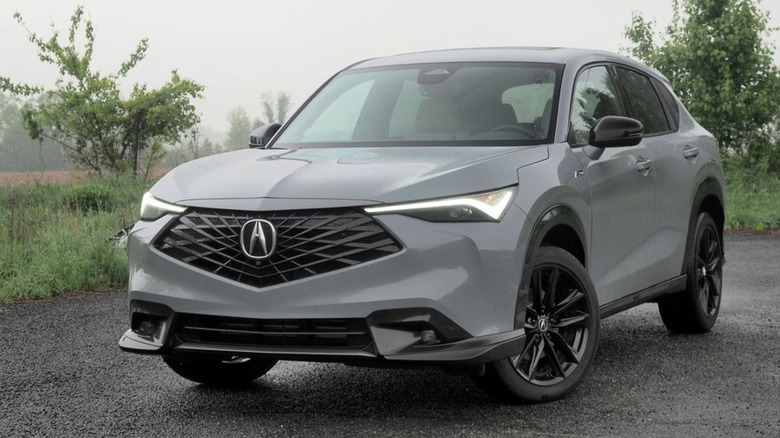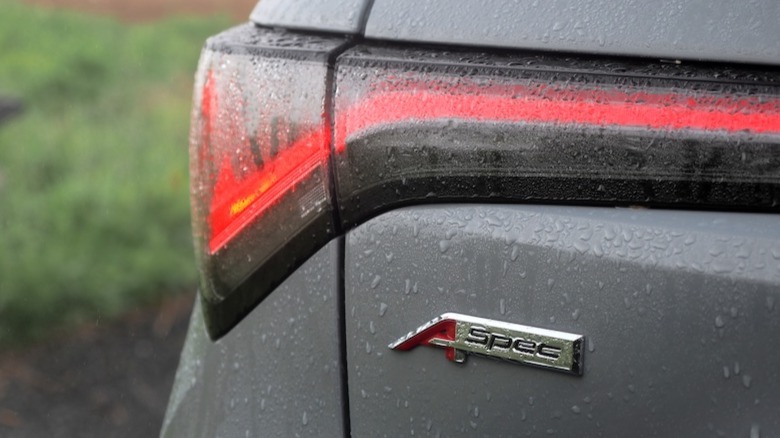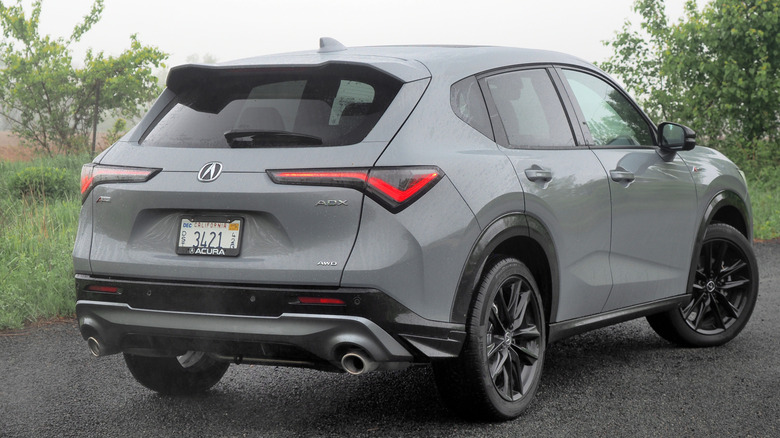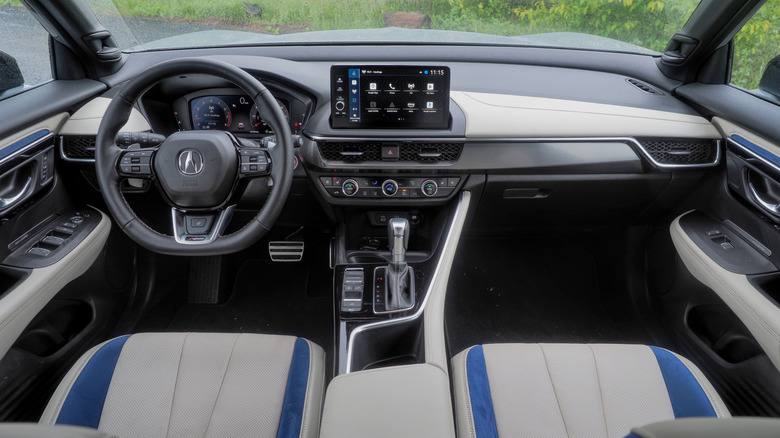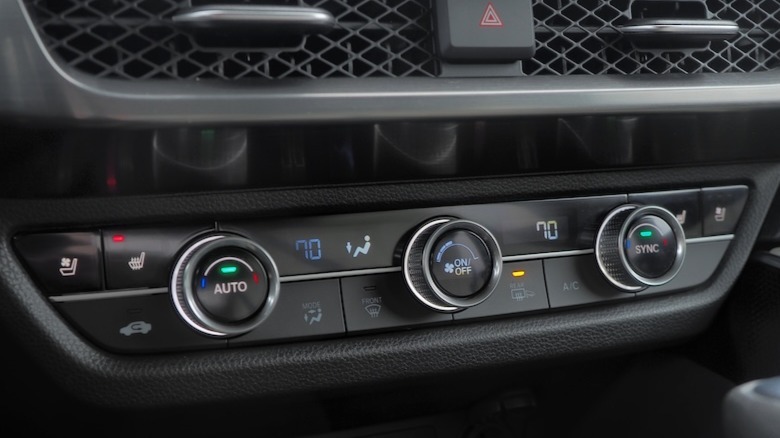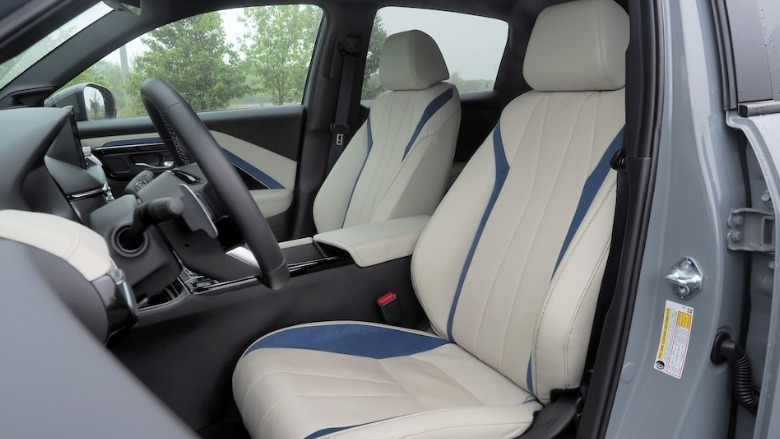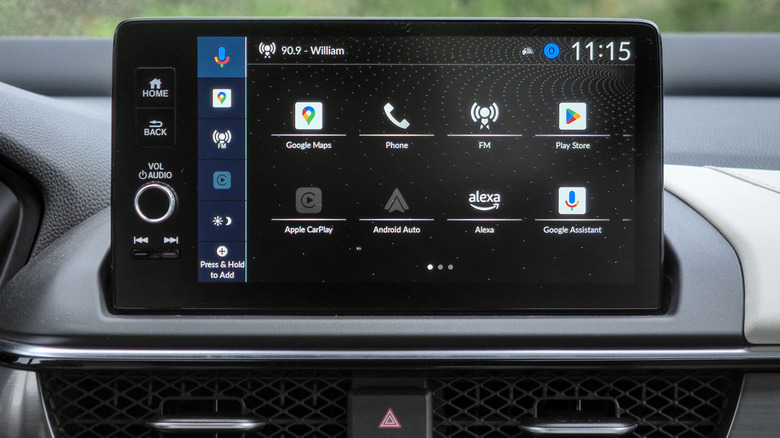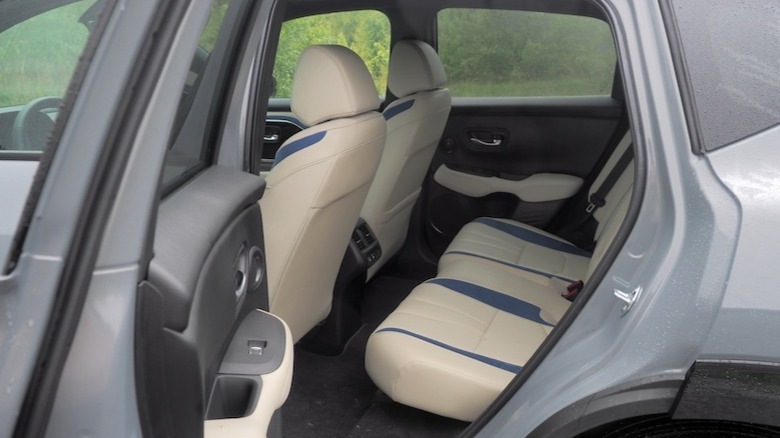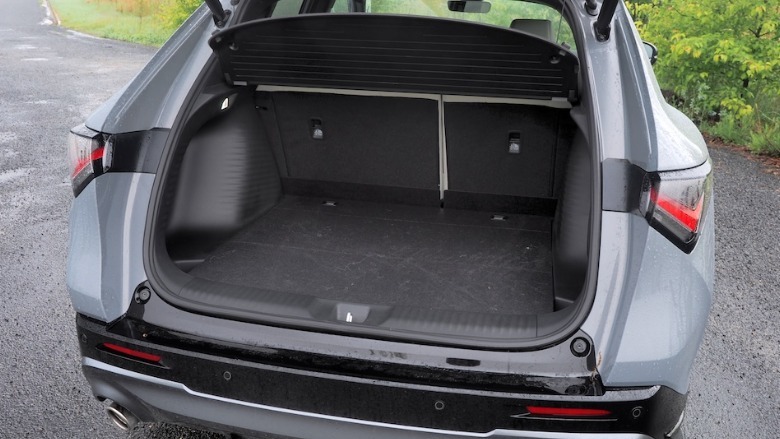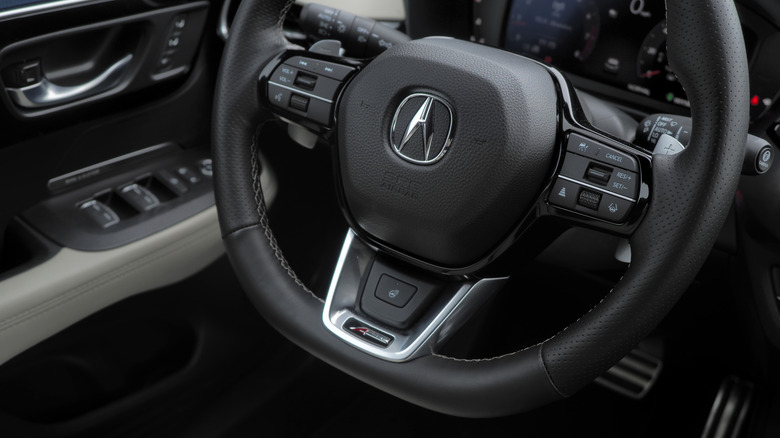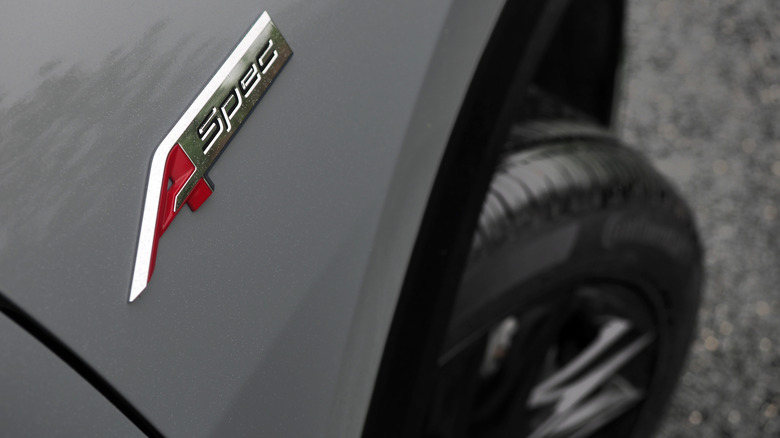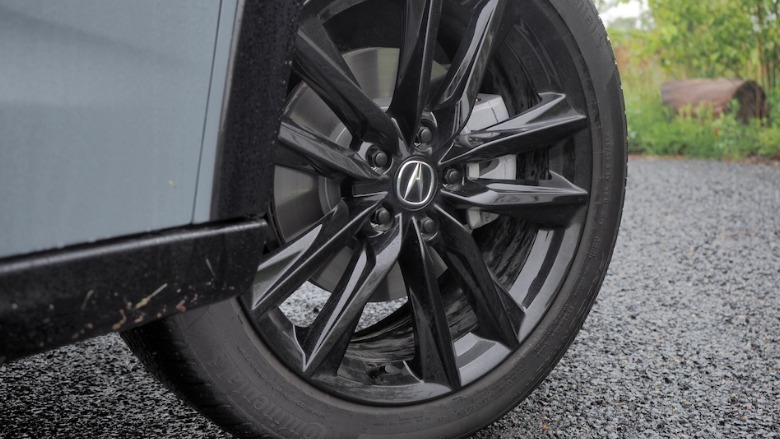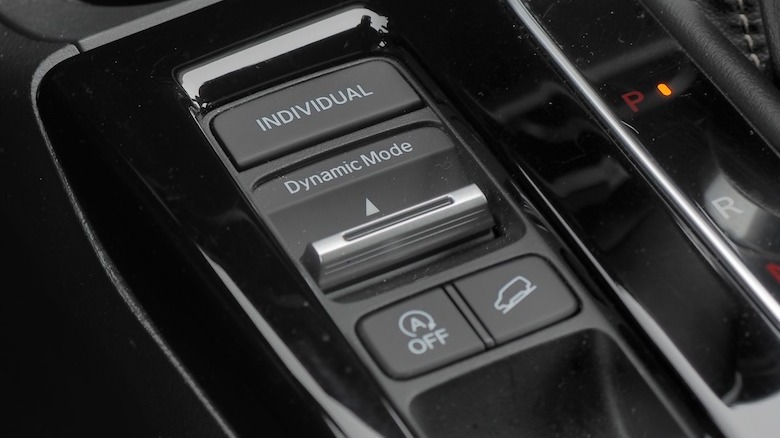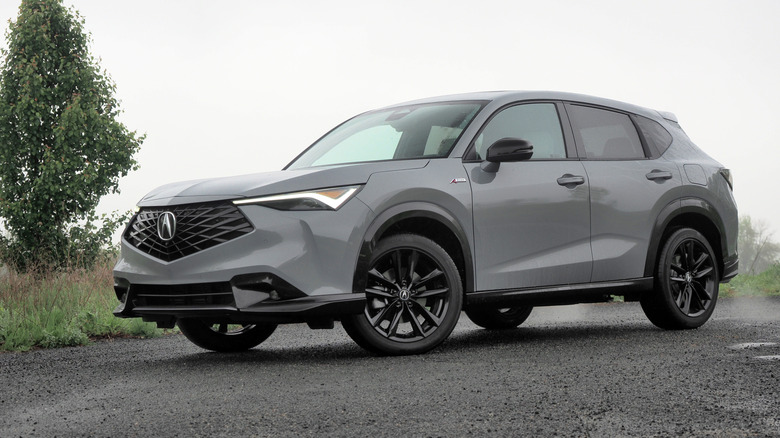2025 Acura ADX Review: Entry-Level Crossover Takes A Gamble On Luxury
Acura isn't leaving anything to chance, when it comes to rolling out the welcome carpet to brand newbies. On the one hand, the Integra successfully rebooted a beloved nameplate as a compact, affordable sports sedan: a blast from the Acura past, that manages to be both attainable and exciting. Still, the market continues to swerve toward SUVs, and so it's the responsibility of the 2025 ADX to embrace those looking for a premium crossover that's neither too large on the road, or on the bottom line.
It's a sensible strategy, though the ADX arrives into what's already a crowded segment. Drivers are spoiled for choice, with options that run the gamut from luxury (like the Audi Q3 and Lincoln Corsair) through to the legitimately spritely (such as BMW's excellent X1).
Acura's answer is a sensible one, a more upscale alternative to the popular — but not terribly prestigious — Honda HR-V and focusing its improvements on where it believes it stands to gain the most. The result is charming in many ways, even if not a clean sweep across the board.
One engine, two drivetrains, three trims
It looks bigger than it is, cherry-picking elements from Acura's bigger SUVs like the refreshed RDX to good effect. Probably less divisive than its counterparts at Lexus and BMW, too, where outsized grilles and hectic crease-lines still rule the day. 18-inch wheels are standard on the base ADX, switched out for 19-inch versions on the A-Spec packages. Notably, all-wheel drive versions of the crossover get a spare tire, while the front-wheel drive models make do with a tire repair kit.
2025 ADX ownership kicks off at $36,350 (inclusive of $1,350 destination) for the FWD model. The A-Spec Package starts at $39,150, and the A-Spec Advance from $43,350. On all trims, switching to AWD is $2,000 extra.
Despite Acura's driving boasts, things are fairly humble under the sharply-scored hood. A 1.5-liter turbocharged inline-four gas engine delivers 190 horsepower (at 6,000 rpm) and 179 lb-ft of torque (between 1,700 and 5,000 rpm). A continuously variable transmission (CVT) is the only option. Acura fits 12.3-inch ventilated front brakes and 12.2-inch solid rear brakes, along with all-season tires.
A familiar cabin
Inside, Acura's familial connection is fairly clear. From the clicky switchgear on the steering wheel, to the old-school transmission shifter, to the HVAC controls, there'll be no surprises if you've spent time in a recent Civic or other Honda. That's not necessarily a bad thing — it's sturdy and the surfeit of physical controls is welcome in this age of touchscreen reliance — but it does leave the ADX feeling a little less special than its more expensive brethren.
Acura does dress up the parts bin stuff, to generally good effect. The white seats with their blue inserts probably aren't practical for families or those with pets, but they add a welcome splash of near-nautical charm to the cabin; the metal shift paddles on the steering wheel embarrass models multiples of the ADX's price, for making do with mere plastic.
Base trim and A-Spec cars get leatherette seats (with microsuede inserts on the latter); real leather requires the flagship A-Spec Advance. That also has more driver's seat power adjustment, though both A-Spec trims have power on the front passenger seat. All trims have heated front seats; A-Spec cars get ventilated front seats, too, and the A-Spec Advance throws in a heated steering wheel. No rear seat heating option, though.
Well-equipped and spacious
Dual-zone climate control is standard, along with a 10.2-inch digital cluster display and a 9-inch central touchscreen. Acura is missing a trick, by not better distinguishing itself from Honda through its infotainment UI; still, you do at least get wireless Apple CarPlay and Android Auto, and the A-Spec Advance has Google built-in with Google Maps, Amazon Alexa, and the Google Assistant.
It also enjoys a 15-speaker Bose audio system, a step up from the 8-speaker regular system in the lesser trims. All trims get two USB-C ports in the front, a wireless charging pad, and two USB-A ports in the back.
There's decent legroom and headroom in both the front and the back, and seating four adults would be no great hardship. It's worth noting that the A-Spec package's panoramic glass roof does trim over an inch from rear headroom. The trunk holds 24.4 cu-ft, expanding to 55.1 cu-ft with the rear seats folded: more than an Audi Q3 (23.7/48 cu-ft) but less than a BMW X1 (25.7/57.2 cu-ft).
Nimble but not especially engaging
Both the Audi and the BMW have more power, and I suspect I'd have had more fun behind their respective wheels. The ADX's chunky steering wheel feels great, and though it's down on horses that's not actually such a headache: it feels zippy and nimble, without being crashy over shoddy asphalt. No, the issue — as is so often the case — is the CVT.
We're a long way from the early days of continuously variable transmissions, where they were genuinely disappointing. These days, they do a grand job of balancing economy and convenience. In the Acura, though, the CVT's efforts just don't match the eagerness that the turbo-four brings.
You can overrule things, stepping through faux-gears with the paddles, but even in Sport mode the ADX never really feels urgent. Well-planted and dependable, yes; probably potent enough for its target audience, too. Just don't spend any time in the Integra beforehand: its version of the same engine (tuned for 200 horsepower and 192 lb-ft of torque) paired with the optional six-speed manual is genuinely good fun, and overshadows what the crossover offers.
Small engine doesn't mean big economy
Front-wheel drive ADX trims are rated at 26 mpg in the city, 31 mpg on the highway, and 28 mpg combined. The AWD versions see those numbers dip to 25, 30, and 27 mpg respectively. My own, mixed driving in an AWD car landed at just over 23 mpg, which put pay to any expectation I might've had that a diminutive engine automatically means gas-sipping economy.
At least the safety tech is comprehensive. AcuraWatch is standard on all trims, with adaptive cruise control, lane-keeping assistance, lane departure warnings, collision mitigation braking with pedestrian detection, and road departure mitigation. There's also Traffic Jam Assist, blind-spot and cross-traffic warnings, and a rear-seat reminder. Only A-Spec Advance trim gets a 360-degree camera, parking sensors, and low-speed braking control, mind.
There's no doubting that the 2025 ADX A-Spec Advance AWD is the most covetable version. Problem is, at $45,350 all-in, you're in the same ballpark as a BMW X1 xDrive28i with the Technology Package or an Audi Q3 Premium Plus 45 with the Technology Package. Both have more prestige and more power.
2025 Acura ADX verdict
Set aside expectations of a sporty little crossover — beyond the styling cues — and the ADX is likable. Handsomely designed, reasonably well-equipped for the price, and practical, it has far more mass-market appeal than an Integra, I suspect. Even if Acura's little sports sedan is more attuned, for better and worse, to the demands of a performance driver.
Push more aggressively, though, and the crossover starts to feel less compelling. It's not slow, but the ADX's engine is far from aurally beguiling; the transmission encourages neither eagerness nor revving high. Some cars just don't really encourage you to drive fast, even if they wouldn't be averse to the idea on paper.
That's all fine for buyers of small SUVs generally: this is not, frankly, a segment pitched at pedal-to-the-metal drivers. As a gateway to Acura's line-up, then, the 2025 ADX leans on the practical comfort side rather than the brand's enthusiast credentials. It's a wise approach, but it means the ADX falls short of convincingly eclipsing the heavyweights it's up against.
